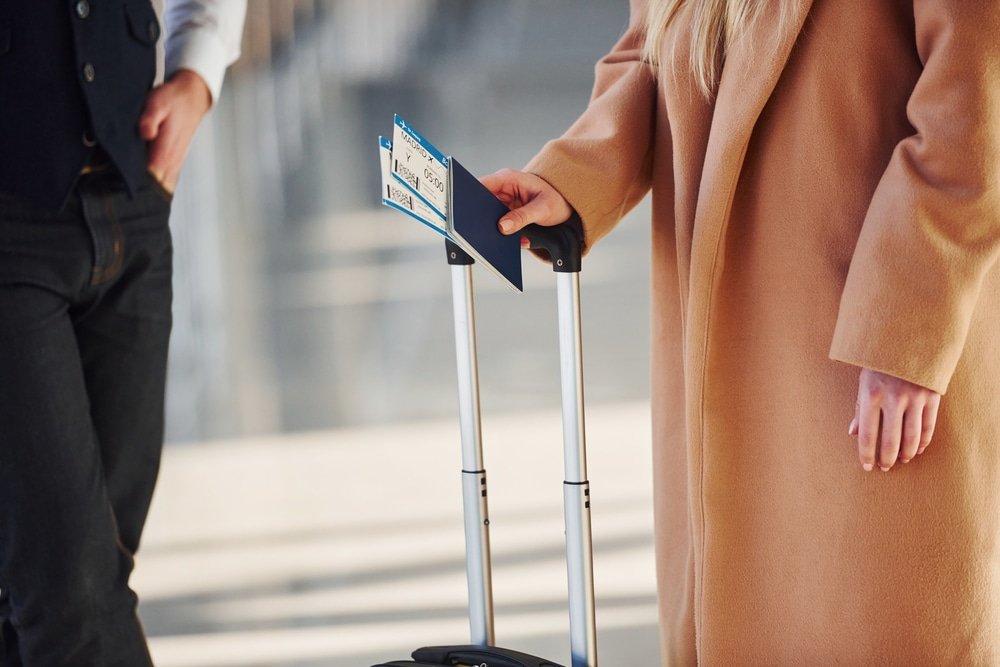

Written by our local expert SJ
Sarah-Jane has lived in Croatia for 10+ years. SJ, as she is known, has been traveling the Balkans & beyond since 2000. She now shares her passion for traveling with her husband & kids.
With the introduction of the European Travel Information and Authorisation System (ETIAS) by the end of 2024 or early 2025, traveling to Europe is about to change for millions of visitors from visa-exempt countries.
Set to be fully implemented by 2025, ETIAS aims to bolster the security of the Schengen Area while maintaining the ease of travel for tourists, business travelers, and more. If you’re planning a trip to Europe in the near future, here’s everything you need to know about ETIAS, how it works, and why it’s being introduced.

Skip Ahead To My Advice Here!
What Is ETIAS -EU Countries Travel Authorization System
The new ETIAS stands for European Travel Information and Authorisation System, a new system designed to pre-screen travelers before they enter the Schengen Area. It will include 30 European countries at the time of kick-off.
While ETIAS is not a visa, it functions similarly in that it requires travelers to obtain authorization prior to entering the region. However, unlike traditional visa applications, the ETIAS process is designed to be much faster, simpler, and fully electronic.
The introduction of ETIAS is largely a response to security concerns within Europe. By implementing this system, the European Union aims to identify potential security threats posed by visa-exempt travelers and prevent such risks before they materialize. While the primary purpose is security, ETIAS also plays a role in managing migration and reducing irregular entries into the Schengen Area.
Countries Requiring ETISAS

Here is the full updated list of countries that will require ETIAS for visa-exempt travelers once it is fully implemented in 2025. This includes both current Schengen members and countries expected to join soon:
- 🇦🇹 Austria
- 🇧🇪 Belgium
- 🇧🇬 Bulgaria
- 🇭🇷 Croatia
- 🇨🇾 Cyprus
- 🇨🇿 Czech Republic
- 🇩🇰 Denmark
- 🇪🇪 Estonia
- 🇫🇮 Finland
- 🇫🇷 France
- 🇩🇪 Germany
- 🇬🇷 Greece
- 🇭🇺 Hungary
- 🇮🇸 Iceland
- 🇮🇹 Italy
- 🇱🇻 Latvia
- 🇱🇮 Liechtenstein
- 🇱🇹 Lithuania
- 🇱🇺 Luxembourg
- 🇲🇹 Malta
- 🇳🇱 Netherlands
- 🇳🇴 Norway
- 🇵🇱 Poland
- 🇵🇹 Portugal
- 🇷🇴 Romania
- 🇸🇰 Slovakia
- 🇸🇮 Slovenia
- 🇪🇸 Spain
- 🇸🇪 Sweden
- 🇨🇭 Switzerland
ETIAS Travel Authorisation FAQ: What You Need to Know
ETIAS FOR EROPE FAQS
What is ETIAS?
ETIAS (European Travel Information and Authorisation System) is a new pre-travel authorization for visa-exempt travelers visiting Europe’s Schengen Area. It screens individuals before they enter to enhance security and streamline travel.
Who needs ETIAS?
Travelers from visa-exempt countries, including the U.S., Canada, and Australia, will need ETIAS for stays up to 90 days.
How do I apply?
The application is online, takes about 10 minutes, and requires personal, travel, and security-related information. The fee is €7 for adults aged 18-70.
How long is ETIAS valid?
Once approved, ETIAS is valid for three years or until the passport expires, whichever comes first.
How long can I stay in Europe with ETIAS?
ETIAS allows for stays of up to 90 days within a 180-day period in the Schengen Area.
Do I need to apply each time I visit Europe?
No, as long as your ETIAS is still valid, you can travel multiple times without reapplying for an ETIAS travel document. However, it would be best if you stayed within the 90-day limit.
How long does approval take?
Most ETIAS applications are approved within minutes. In rare cases, further review of your travel document could take up to four weeks.
What happens if my ETIAS is denied?
If your ETIAS application is denied, you will be informed of the reasons for the decision and can appeal it or reapply if the issues are resolved.
What information is required to apply?
You will need a valid passport, personal information (e.g., name, address, date of birth), travel details, and answers to security questions.
What is the purpose of ETIAS?
ETIAS is designed to enhance border security, reduce risks from crime and terrorism, and streamline the movement of travelers in and out of the Schengen Area.
When will ETIAS be implemented?
ETIAS is expected to be fully operational by 2025.
Brands We Use And Trust
Who Needs To Apply For ETIAS?

ETIAS will be mandatory for visa-exempt travelers from over 60 countries, including the United States, Canada, Australia, and New Zealand, among others. If you’re a citizen of one of these countries and plan to visit the Schengen Area for up to 90 days within a 180-day period, you will need to apply for ETIAS before your trip.
It’s important to note that ETIAS is only required for short stays, such as tourism, business, or medical visits. If you’re planning to stay in Europe longer or for purposes such as work or study, a visa is still required.
The ETIAS requirement applies to travelers of all ages, including children and the elderly, although those under 18 and over 70 are exempt from the application fee.
How Does The ETIAS Application Process Work?

The ETIAS application process is straightforward and can be completed online through the official ETIAS website, typically in about 10 minutes. Applicants will need to provide the following information:
- Personal details (name, address, date of birth, etc.)
- Passport information
- Travel details, including the first Schengen country you intend to visit
- Answers to security-related questions
The application fee is €7 for travelers between the ages of 18 and 70, and payment can be made online at the time of application. Once submitted, most applications are processed within minutes. However, in some cases, further checks may be required, and approval could take up to four weeks.
Once approved, the ETIAS authorization is valid for three years or until the applicant’s passport expires, whichever comes first. This means that during the validity period, travelers can enter and exit the Schengen Area multiple times without reapplying, as long as each stay does not exceed 90 days in a 180-day period.
Why Is ETIAS Being Introduced?

The primary motivation behind ETIAS is to enhance security within Europe. With the rising number of travelers visiting the Schengen Area and the increasing risk of terrorism, organized crime, and illegal migration, the European Union sought to create a system that would allow for better identification of potential threats. ETIAS enables authorities to vet travelers before they even arrive at European borders, reducing the likelihood of security incidents.
In addition to security, ETIAS also aims to improve border management. The pre-screening process helps identify individuals who may pose a migration risk or are likely to overstay their authorized stay, allowing authorities to take preventive action.
How Does The ETIAS Launch Impacts Travelers
For most travelers, ETIAS will add minimal inconvenience. The application process is designed to be quick, and with a three-year validity, you won’t need to reapply for every trip to Europe. However, there are a few key points to keep in mind when planning your travels:
- Timing is crucial: While most applications are approved within minutes, it’s best to apply at least a few weeks before your trip in case additional checks are needed.
- Accuracy is important: Double-check all your details when applying, as even small errors can result in delays or rejections.
- Plan for costs: Although the fee is minimal, it applies to each traveler between the ages of 18 and 70. If you’re traveling with a family or group, the costs can add up, so budget accordingly.
One of ETIAS’s major benefits is that it streamlines entry into the Schengen Area. Since travelers are pre-screened, border control procedures should be quicker and more efficient, meaning shorter wait times at airports and other points of entry.

No spam. Unsubscribe at any time.
New Travel ETIAS Vs. Travel Visa: What’s The Difference?

It’s important to note that ETIAS is not a visa. Visa applications for Europe involve far more paperwork, fees, and time, and they’re typically required for long-term stays, work, or study. ETIAS, on the other hand, is only for short-term travel (90 days within a 180-day period) and is significantly easier to obtain. If your travel plans fall outside the scope of ETIAS, you’ll still need to apply for a traditional visa.
Final Thoughts: Prepare For A Smoother Trip To Europe
With the introduction of ETIAS, the way travelers from visa-exempt countries visit Europe is changing. While the new system adds an extra step to the pre-travel process, it’s designed to improve security and streamline border entry for millions of visitors. The application process is simple, the fee is affordable, and the benefits of faster and safer travel outweigh the minor inconvenience.
As ETIAS rolls out in 2025, be sure to stay informed and plan ahead. Applying for your authorization early will help you avoid last-minute travel stress and ensure a smooth entry into the Schengen Area. Safe travels!
Visit the European Union’s official ETIAS page for more detailed information and to check your eligibility for ETIAS.
MORE TRAVEL & VISA TIPS BLOGS
Please visit:
Our Sponsor
